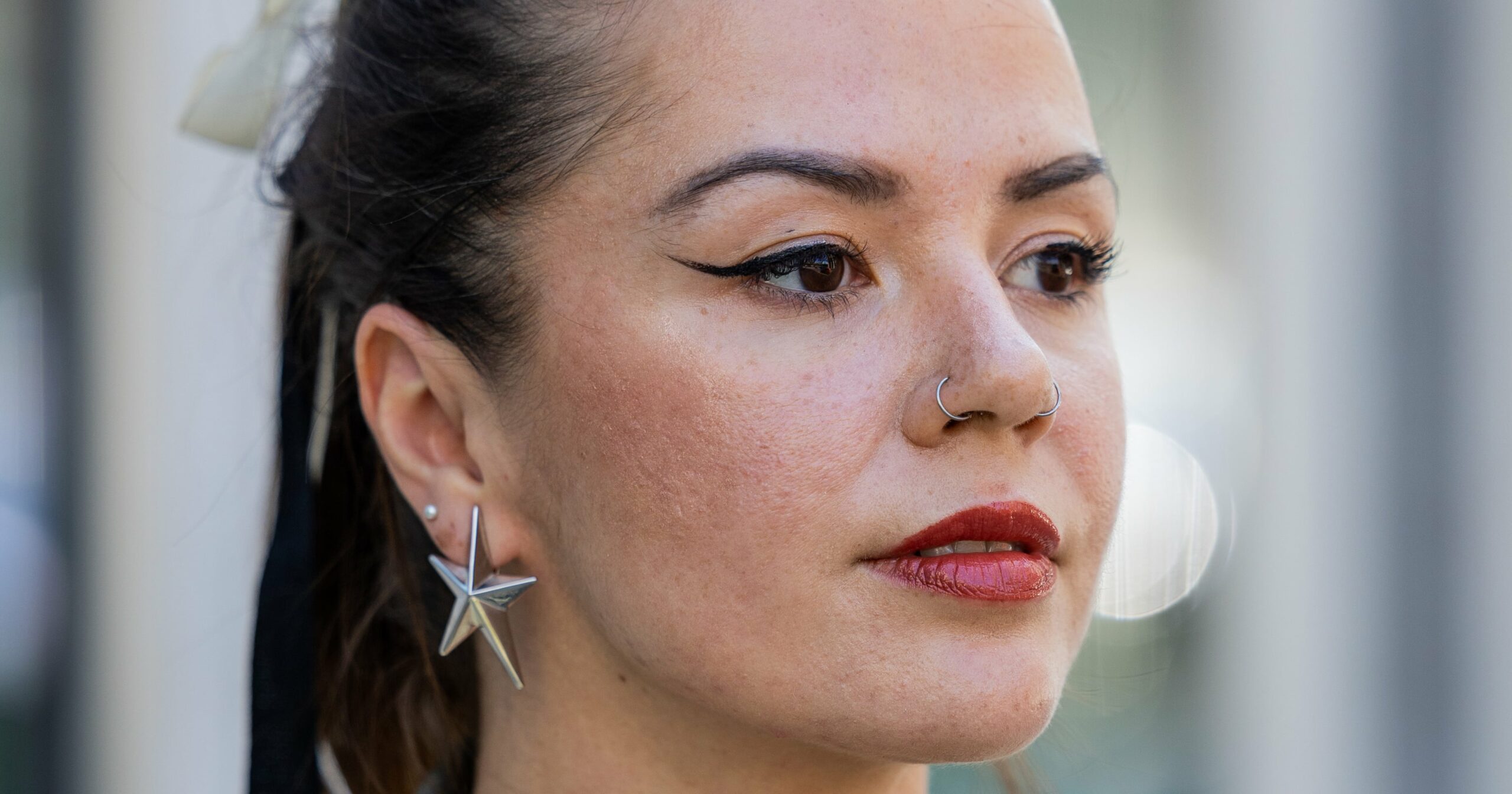Body art and jewelry have been popular vehicles for self-expression for centuries, and while most people love them, it’s not uncommon for someone to change their mind down the road. One is arguably a lot easier to get rid of than the other; tattoo removal involves a laser and typically requires multiple rounds of treatment to see results. Piercings, on the other hand, eventually close up after you remove the jewelry; however, in many cases, you’re still left with a hole or scar. How long does it take for piercings to close, exactly? It really depends. And though the mark left behind may go away with time, it’s important to be realistic.
“No matter the piercing, you will usually be left with a small amount of residual scar tissue,” Johnny Pearce, a piercer at Nine Moons Piercing in NYC, tells POPSUGAR. “Sometimes it’s visible, sometimes it’s not, most of the time it is quite minimal, but any time we create and heal an injury, our body is supposed to produce a varied amount of scar tissue.” He likes to look at the marks as “nostalgic reminders” of past adventures, not regrets.
That said, it’s OK if you want to do something about them. Ahead, two experts share more about how long it takes for different piercings to close, and a plastic surgeon gives her recommendations for getting rid of the scar they leave behind.
Do Ear Piercings Close?
Ear piercings are one of the most common types, and most people know that in time, the holes do close if you remove the jewelry. The big question is, how long does it take for ear piercings to close? The truth is, “Placement of the piercing matters far less than the duration that a piercing has been in place,” says Sarah Lacy, senior manager of piercing research and innovation at Rowan in NYC. This means that if you recently got your ears pierced but shortly after decided you didn’t like it, the hole will “start to close within minutes.” (That’s why the pros recommend you don’t remove your jewelry until the hole is completely healed.)
“Essentially, the longer you’ve had a piercing, the longer it will take to close,” Lacy says. “In some cases, an ear piercing may never close if it’s been established for many years; think of your grandmother’s lobe piercings that she’s had since childhood.”
Whether or not you’re left with a scar depends on a few factors, and there are no guarantees. “Scarring has more to do with genetics, skin type, and other medical conditions than it does with the piercing itself,” Lacy says. However, as previously mentioned, if you’ve had the ear piercing for quite a long time, you’ll likely be left with an indent or mark.
Do Nose Piercings Close?
Parts of the nose are made up of cartilage, so the healing time varies slightly from the rest of the face. Nose piercings located on the nostrils take, on average, six to nine months to heal and another six to 12 months for the body to fully accept. After the initial healing phase, if you were to remove the jewelry, the hole would likely close up and leave behind a faint mark. But because the entry point for the jewelry is so small, the mark left behind is hardly noticeable to other people.
Septum piercings, on the other hand, are a slightly different story. The area takes about two to three months to heal and another six months for your body to fully acclimate to it. “Once stable, it’s often open forever,” Pearce says. However, in the case of this location, the hole is hidden underneath the tip of the nose.
Do Belly Button Piercings Close?
Belly button piercings are another popular location. The hole in this location is rather large, meaning it takes a bit longer to heal than your ears or nose. According to Pearce, the navel takes approximately nine to 12 months to close and another six to 12 months to become stable. After that time, if you took your jewelry out, you’d be left with the entry and exit points but wouldn’t be able get the bar all the way through.
Do Nipple Piercings Close?
The healing time on nipple piercings takes approximately nine to 12 months and another half a year at least to become stable. However, Pearce says it’s “never stable enough to remove and leave out,” or you run the risk of the holes closing. Even still, you’ll be left with small holes where the jewelry once was.
How to Get Rid of Piercing Scars
If you’ve recently removed the jewelry from a piercing in hopes that it’ll close and have found yourself left with a scar, you’re not alone. And if you can’t look at the scar without hearing your grandmother’s voice in your head saying, “You’re going to regret that one day,” then you’re also not alone. While we firmly believe you should live life with no beauty regrets (though maybe you can regret plucking off your eyebrows all those years ago), that’s not to say you can’t do something about it.
“Piercings are quite common, especially piercings on the face, the lip, and the eyebrow,” says Usha Rajagopal, MD, board-certified plastic surgeon and medical director of the San Francisco Plastic Surgery and Laser Center. “Once you are done with the piercing, you can have an indented scar in the area of the piercing, and it is really hard to camouflage.”
The solution for this is fairly straightforward, but it requires a professional. “The treatment for a piercing is to excise the scar and place a stitch,” she says. “It is a quick office procedure done under local anesthesia. It has very little downtime and very little discomfort in the healing process.”
If you have scar tissue from a piercing, Dr. Rajagopal says a procedure called scar revision surgery may be necessary. “[It] involves removing the old scar tissue and rejoining the skin in a way that minimizes the appearance of the scar. This option is often considered for more prominent or noticeable scars that haven’t responded well to other treatments.”




